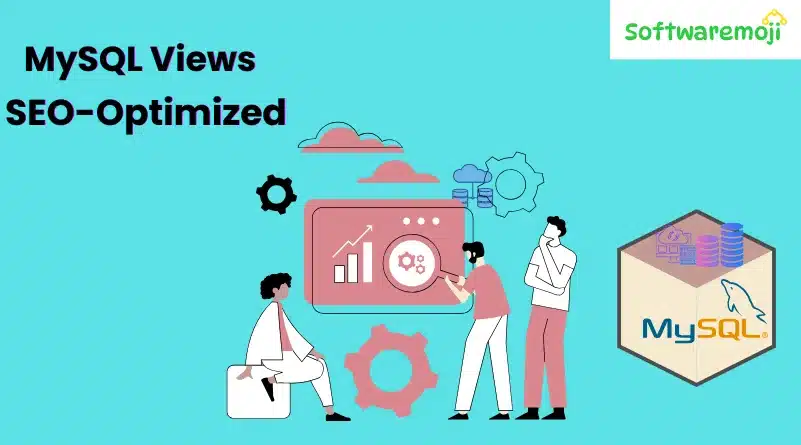
What Are Views in MySQL?
MySQL Views Tutorial: MySQL Views are virtual tables that display data stored in other tables without actually storing any data themselves. They act as stored SQL queries, allowing users to simplify data access and improve security by restricting access to sensitive information.
Syntax: How to Create a View in MySQL
MySQL Views Tutorial: To create a view, use the following syntax:
sql
CREATE VIEW view_name AS
SELECT column1, column2, …
FROM table_name
WHERE condition;
- CREATE VIEW view_name → Defines a new view with the given name.
- AS SELECT → Specifies the SQL query that defines the view.
- The view can retrieve data from one or multiple tables.
How to Create a MySQL View (Step-by-Step Guide)
Step 1: Creating a Simple View
MySQL Views Tutorial: Let’s create a view that allows only authorized users to see selected columns from the members table.
sql
CREATE VIEW accounts_v_members AS
SELECT membership_number, full_names, gender
FROM members;
This view ensures that only membership_number, full_names, and gender are visible while hiding other sensitive data.
Step 2: Viewing Data from the View
To retrieve data from the view, use the SELECT statement:
sql
SELECT * FROM accounts_v_members;
Step 3: Checking View Definition
To check the SQL statement that defines a view, use:
sql
SHOW CREATE VIEW accounts_v_members;
Using Joins in MySQL Views
MySQL Views Tutorial: Views can also combine data from multiple tables using JOIN statements.
Example: Creating a View with JOINs
This view retrieves rental details from the members, movies, and movie_rentals tables:
sql
CREATE VIEW general_v_movie_rentals AS
SELECT mb.membership_number, mb.full_names, mo.title, mr.transaction_date, mr.return_date
FROM movierentals AS mr
INNER JOIN members AS mb ON mr.membership_number = mb.membership_number
INNER JOIN movies AS mo ON mr.movie_id = mo.movie_id;
Querying the View
MySQL Views Tutorial: To retrieve movie rental details, simply run:
sql
SELECT * FROM general_v_movie_rentals;
Instead of writing complex SQL queries every time, this view simplifies the process.
How to Drop a View in MySQL
MySQL Views Tutorial: If a view is no longer needed, delete it using the DROP VIEW command:
sql
DROP VIEW general_v_movie_rentals;
Why Should You Use MySQL Views?
1. Simplifies Complex Queries
- MySQL Views Tutorial: Views allow you to store complicated SQL queries as simple table-like structures.
- Instead of writing JOIN queries repeatedly, you can reference a single view.
2. Enhances Database Security
- Views control access to data by displaying only authorized columns to users.
- Sensitive information, like credit card details, can be hidden.
3. Increases Code Reusability
- Developers can use views instead of writing the same queries multiple times.
- This reduces errors and improves code readability.
4. Ensures Data Integrity
- Views ensure that applications use a consistent schema, even if underlying tables change.
Key Takeaways
✔️ MySQL Views are virtual tables that store SQL queries instead of actual data.
✔️ They help simplify complex queries, improve security, and enhance database performance.
✔️ Views allow users to retrieve specific columns while restricting access to sensitive data.
✔️ They can be used with JOIN operations to combine data from multiple tables.
✔️ Views can be updated, but it’s recommended to avoid updating them unless necessary.
By implementing MySQL Views, you can optimize database management, improve efficiency, and enhance security in your applications.
